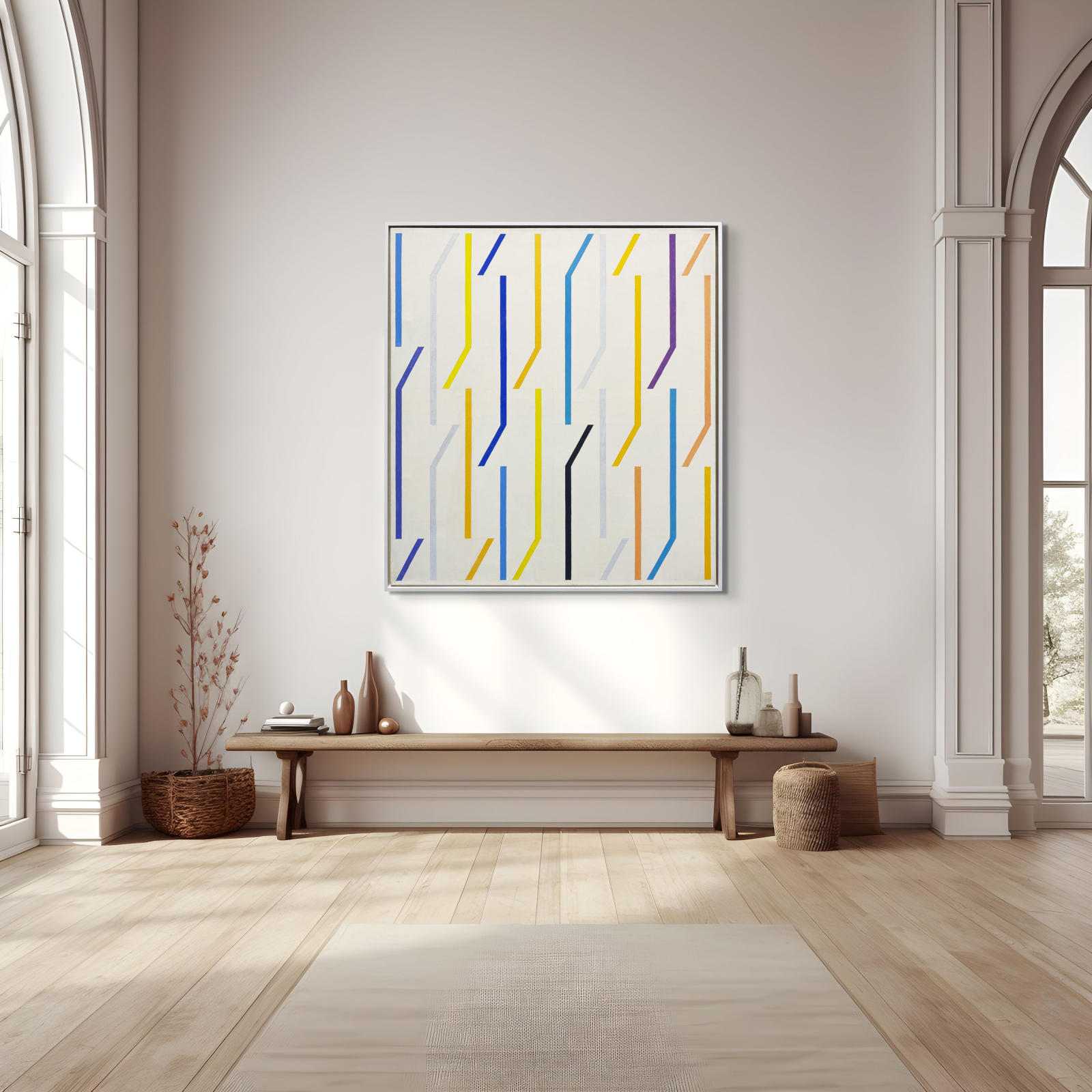artist
Michael Loew was an important Abstract Expressionist who got his start working for the New Deal art projects between 1933-1937. He initially worked in watercolor, traveling to Mexico and the Yucatán as a Battalion Painter to document the progress of construction of a U.S. Naval airbase on Tinian Island. It was from this airbase that the Enola Gay bomber jet would later take off to drop the atomic bombs on Hiroshima and Nagasaki. Here Loew refined his aesthetic sensibility and mastery of paper media. After returning to the U.S., Michael Loew studied under Hans Hofmann and, in Paris, Fernand Léger. He was a member of the American Abstract Artists group and showed at the Stable Gallery Annuals from 1951-1955.
Description
Loew's artwork during the mid-1970s emphasized a balance between structure and freedom, showcasing his ability to blend rigorous geometry with expressive abstraction. Michael Loew's artwork Pendualities is part of his "White Series," which reflects his mature style rooted in Abstract Expressionism, geometric abstraction, and Neo-Plasticism. Loew often utilized grid structures inspired by Mondrian, experimenting with color harmonies and subtle tonal transitions. The delicate pencil lines that Loew utilized to mark out the pattern helps the viewer experience the process and get a glimpse of artists medium that creates a sublime surface.
This period of his work is very undervalued and has not had proper attention since his passing. Much of this work has been unseen and not exhibited. It has the potential though to be highly relevant to collectors who enjoy hard edge abstraction, pattern play and minimalist compositions and ideas. Also enticing is the element of playfulness mixed with intellectual approach of theories and ideas. These works appeal on a very base visual level and on philosophical levels that relate to who our brain thinks and plays with color, space and math, order and logic. This particular work is a great example as the elegant white he chose along with the restrained pastel tones is a good combination over when he sometimes uses a lot of pinks or “pretty” colors.
In 1946 Loew enrolled in the Hans Hofmann School of Fine Arts under the GI bill. During his time spent in the tutelage of Hans Hofmann, Loew turned his interest towards abstraction, and his works became influenced by both Post-Cubism and Neo-Plasticism. His radical experiments with color and geometry came to define his mature style. Loew was also passionate about artists’ rights and activism and led a number of demonstrations. He was part of the Spiral Group, an artist organization devoted to exhibiting experimental art.
provenance
Private collection by descent from the above
Capsule, NY. 2025

















